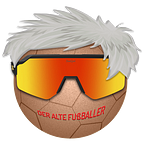Hurts So Good: An Old Man’s Guide to Playing with Pain
6 min readJan 28, 2023
Yeah, my friends are gone and my hair is grey
I ache in the places where I used to playLeonard Cohen, “Tower of Song”
There isn’t a morning I wake up and don’t hurt. It might be a knee — next day, a shoulder. Maybe my forehead or a shin. Oh no, a hip. I rock like a hobby horse, propelling my feet off the bed onto the floor, then try to remember how I got hurt, not to avoid doing it again but to understand how to deal with it better the next time. See, I caused it not by working but by playing — and enjoying…
